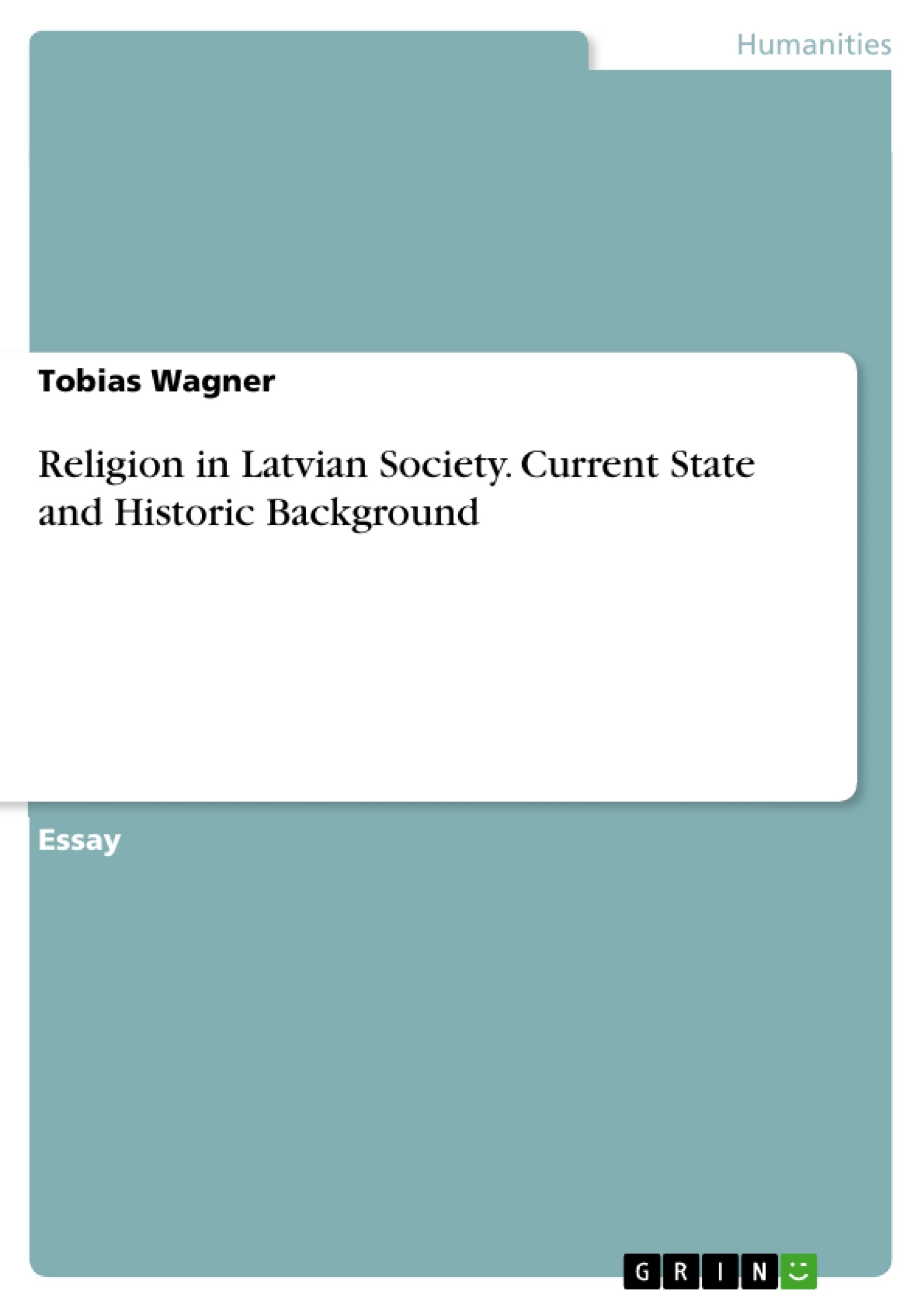This essay focuses on the role religion has in contemporary Latvian society. How the religion nowadays is shaped by the history of the country and how the history of the country was and is shaped by its religion. It also dives into what Latvians believe, how many Latvians believe and how many don't.
Like many other countries, Latvia's history and culture are (heavily) shifted by religion. Not only was it one of the last European countries to get christianized , but it nowadays also has a large portion of people who consider themselves as non-believers. Despite that, all the other prominent Christian confessions (albeit different in proportion) are also present in Latvia – which can be seen as a result of the country "standing at the crossroads" of different historic empires and cultures and thus being comprised of different influences.
Nowadays Latvia's religious believers are divided into mostly Lutheranism (36,51%), then also Catholicism (19%), and the Eastern Orthodoxy (13,49%). After that, there are also other Christian confessions (1,42%), other believers (0.03%) and people who don’t believe at all (31.09%). These numbers were given out by the Ministry of Justice for the year 2019.
In this regard Latvia can be seen as a special case in (Eastern) Europe. Not only is the country different from the majority of other European states in regard to their main religion. Latvia is also – especially in Eastern Europe – one of the most secular states.
Table of Contents
- Introduction
- Historic overview
- Different Latvian religions
- Protestantism
- Catholicism
- Eastern Orthodoxy
- Other, smaller religions
- Non-believers
- Summary
- Sources
Objectives and Key Themes
This essay aims to explore the historical background of Latvian religious history and delve into the various religious denominations present in Latvia today. The focus is to understand the current state of religion in Latvian society.
- The historical evolution of religion in Latvia, from pagan beliefs to Christianization.
- The influence of different empires and cultures on Latvian religious landscape.
- The prevalence of various Christian denominations in Latvia today, including Protestantism, Catholicism, and Eastern Orthodoxy.
- The significant presence of non-believers in Latvia.
- The unique position of Latvia within Eastern Europe, with its diverse religious composition and relatively high secularization.
Chapter Summaries
The essay begins with an introduction that highlights the complex history of Christianity in Latvia and establishes the contemporary landscape of religious beliefs, with Lutheranism, Catholicism, and Eastern Orthodoxy as the dominant denominations. The introduction also acknowledges the significant presence of non-believers.
Chapter 2, "Historic overview," delves into the early religious beliefs of Latvia, showcasing the impact of these beliefs on the country's history and the reciprocal influence of history on contemporary religious perspectives. It then discusses the gradual adoption of Christianity by Latvian society, highlighting the role of crusades in the 12th century and the establishment of the Terra Mariana as a Roman Catholic state.
Keywords
The essay revolves around the key concepts of religion, history, and culture in Latvia, focusing on the evolution of religious beliefs, the influence of different Christian denominations, and the presence of non-believers. It examines the significance of Latvia's religious landscape within the broader context of Eastern Europe.
- Quote paper
- Tobias Wagner (Author), 2024, Religion in Latvian Society. Current State and Historic Background, Munich, GRIN Verlag, https://www.grin.com/document/1495873




